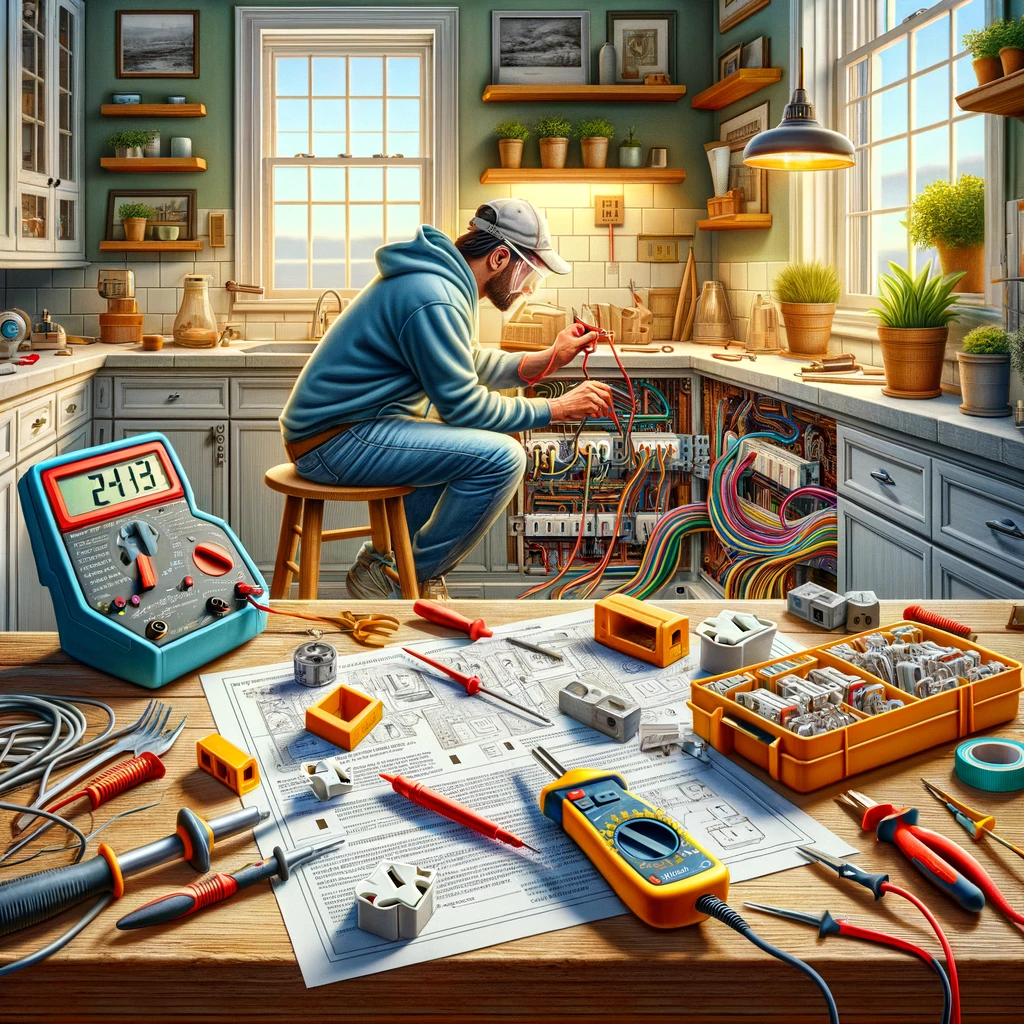
24 HOURS & EMERGENCIES
07301 611 578

Back to Blog
How to Troubleshoot and Fix Non-Working Outlets: Top Tips for a Safe DIY Solution
Advice
13th April 2024

Dealing with non-working outlets can be a frustrating experience, leaving you puzzled about what steps to take before considering the call to a professional. However, understanding the basics of outlet troubleshooting can empower you to resolve common issues safely and efficiently. This comprehensive guide will navigate you through the best practices for diagnosing and fixing non-working outlets, ensuring you're well-equipped with the knowledge to handle this electrical nuisance like a pro.
Understanding Your Home's Electrical System
Before diving into troubleshooting, it's essential to grasp a basic understanding of your home's electrical system. Electrical outlets, or receptacles, are points where you can connect appliances and devices to your home's electrical network. When an outlet isn't working, it could be due to several reasons, including tripped circuit breakers, faulty wiring, or a bad outlet itself.
Step-by-Step Guide to Diagnosing Non-Working Outlets
Step 1: Safety First
Safety should always be your priority. Before inspecting the outlet, ensure all devices connected to it are turned off or unplugged. Avoid touching the outlet or wires with bare hands, especially if they appear damaged.
Step 2: Check Other Outlets
Verify if other outlets in the room or adjacent rooms are working. This step helps determine if the problem is isolated or affects a larger area, which might indicate a tripped breaker or a more significant electrical issue.
Step 3: Inspect the Circuit Breaker
Head to your circuit breaker panel and look for any breakers that have flipped to the "off" position or are stuck in the middle. If you find one, flip it to "off" and then back to "on" to reset it. If the breaker trips again immediately, there might be a serious issue requiring a professional.
Step 4: Test the GFCI Outlets
Ground Fault Circuit Interrupter (GFCI) outlets are designed to protect against electrical shock by shutting off when they detect a ground fault. If your non-working outlet is in the kitchen, bathroom, or other wet areas, it might be connected to a GFCI outlet. Look for a GFCI outlet with a "test" and "reset" button, press the reset button, and check if your outlet works again.
Step 5: Check for Loose Connections
If you're comfortable and knowledgeable about working with electrical wiring, turn off the power to the outlet at the circuit breaker and remove the outlet cover to inspect for loose wires. However, if you're unsure, it's best to call a professional at this stage.
Top Reasons Outlets Stop Working
Tripped Circuit Breaker: Overloaded circuits can cause the breaker to trip, cutting power to certain outlets.
Faulty GFCI Outlet: GFCI outlets can sometimes trip due to a detected ground fault, affecting other outlets connected to it.
Worn Out or Faulty Outlet: Outlets can wear out over time, making them unable to hold a plug snugly or connect properly.
Best Practices for Electrical Safety
Regular Inspections: Periodically inspect your outlets for signs of wear, tear, or damage.
Understand Your Limits: Don't attempt complex electrical repairs if you're not experienced. Electricity is dangerous, and some issues are best left to professionals.
Use the Right Tools: If you decide to inspect or replace an outlet, use insulated tools and wear protective gear.
When to Call a Professional
While many outlet issues can be resolved with basic troubleshooting, certain situations require the expertise of a licensed electrician:
Persistent Issues: If the same outlet or circuit frequently experiences problems, there might be a deeper, more complex issue.
Visible Damage or Burns: Signs of burns or damage to the outlet, wiring, or surrounding area can indicate serious problems.
No Power After Resetting Breakers: If resetting your circuit breaker doesn't restore power, the issue might be with the wiring or the outlet itself.
Conclusion
Troubleshooting non-working outlets is a valuable skill, offering a first line of defence against common electrical problems in your home. By following this guide, you can safely identify and potentially resolve issues without immediately resorting to professional help. Remember, safety is paramount, and understanding when to call a professional can save you from risky situations. Empowered with the right knowledge and precautions, you can tackle the challenge of non-working outlets confidently and safely.
Read More
Explore more articles on the world of Electrics!
2024 Ⓒ Spark Electrics